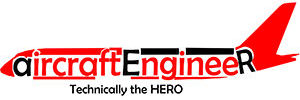Aircraft transit fueling is a critical process that ensures an aircraft has the optimal amount of fuel for its next flight while considering factors like safety, efficiency, and cost. The fueling calculation involves multiple parameters, including flight distance, aircraft weight, fuel consumption rate, alternate airports, and weather conditions. Accurate fueling helps optimize aircraft performance, reduce unnecessary weight, and comply with aviation regulations. This article explores the key aspects of transit fueling calculations, methods used, and industry best practices to ensure safe and efficient operations.
Fuel Uplift Calculator
Local Date & Time: —
Uplift in kg: N/A
Uplift in liters: N/A
Fuel Calculator B737
Outputs:
Fuel on TANK 2:
Arrival Fuel:
Uplift in kg:
Uplifts in liters:
Aircraft Fueling Calculation process
Aircraft fueling is a precise process that ensures the aircraft has the correct amount of fuel for safe and efficient operations. The fuel calculation process involves several key steps:
- Determine Fuel Requirement
- The required fuel is calculated based on factors like flight distance, fuel burn rate, alternate airports, and reserve fuel requirements.
- Measure Fuel in Kilograms (kg)
- In aviation, fuel is always measured in weight (kg) rather than volume because weight directly affects aircraft lift, balance, and performance.
- Unlike volume, weight remains constant regardless of temperature or pressure changes.
- Why Is Fuel Delivered in Liters Instead of Kilograms?
- While aircraft fuel calculations are done in kg, fuel is stored and uplifted in liters because fuel tanks are filled based on volume, not weight.
- Fuel density (specific gravity) varies with temperature, so suppliers deliver fuel in liters but charge based on the equivalent weight.
- Fuel Uplift Calculation
- The amount of fuel to be uplifted is determined using this formula: Fuel Uplift (kg)=Departure Fuel (kg)−Arrival Fuel (kg)\text{Fuel Uplift (kg)} = \text{Departure Fuel (kg)} – \text{Arrival Fuel (kg)}Fuel Uplift (kg)=Departure Fuel (kg)−Arrival Fuel (kg)
- To convert this into liters: Fuel Uplift (liters)=Fuel Uplift (kg)Specific Gravity (SG)\text{Fuel Uplift (liters)} = \frac{\text{Fuel Uplift (kg)}}{\text{Specific Gravity (SG)}}Fuel Uplift (liters)=Specific Gravity (SG)Fuel Uplift (kg)
- Specific gravity (SG) varies depending on fuel type and temperature, but typical jet fuel has an SG of 0.78–0.84 kg/L.
- Why Convert to Liters?
- Fueling trucks and tanks operate in liters, so ground crews need to know the volume to avoid over- or under-fueling.
- Billing and invoicing are done in liters, so the aircraft operator is charged based on the uplifted volume.
This process ensures that the aircraft receives the correct fuel quantity while maintaining accurate records for operational efficiency and cost management.
